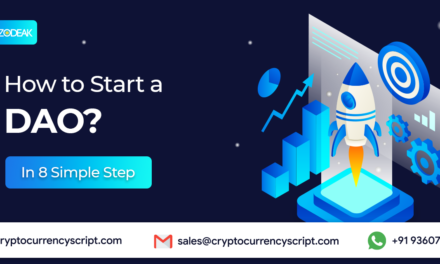Digital tokens known as Real World Assets(RWAs) on blockchains stand in for tangible, conventional financial assets including stocks, bonds, currencies, and commodities.
Among the blockchain industry’s biggest prospects are Real World Asset Tokenization, a sector with a potential value in the hundreds of trillions of US dollars. It is theoretically possible to tokenize and bring anything valuable onto the blockchain. As a result, the market for tokenized RWAs in the digital asset arena is growing. An increasing number of initiatives are seeking to tokenize a variety of assets, including cash, commodities, real estate, and so forth.
We’ll go over what Real World Asset Tokenization are, and how they’re made in this blog…
Real World Asset
Real-world assets tokenized are digital tokens based on blockchain technology. Stand in for conventional and tangible financial assets like cash, commodities, stocks, bonds, credit, artwork, and intellectual property. The ability to access, trade, and manage RWAs has changed significantly with their tokenization. This has opened up new opportunities for blockchain-powered financial services. As well as a broad range of non-financial use cases supported by decentralized consensus and cryptography.
One of the most exciting applications of blockchain technology is asset tokenization which has a market potential that almost fully encompasses all human economic activity. A universal interoperability standard will connect hundreds of blockchains enabling tokenized RWAs worth trillions of dollars on a shared substrate comprised of blockchains and distributed ledger technology-based networks in the financial sector. The financial industry is moving in this direction.
Real World Asset Tokenizing
Representing an asset’s ownership rights as an on-chain token is the process of tokenizing real-world assets. By creating a digital representation of the underlying asset, this procedure helps to close the gap between physical and digital assets. Permits on-chain administration of these asset’s ownership rights.
Compared to traditional assets, tokenized assets have more liquidity, more accessibility, transparent Onchain management, and less transactional friction. Additionally, tokenizing RWAs for financial assets results in the creation of a single layer that manages trading, distribution, clearing, settlement, and storage. Making it possible to create a more efficient Onchain financial system with lower counterparty risk and more effective capital mobilization.
Steps To Tokenize Real-World Assets
Tokenizing a real-world asset calls for many stages at a high level such as…
- Choose which Real World Asset want to tokenize.
- Choosing the token’s basic traits such as its fungibility or non-fungibility and the token standard to use(such as ERC20 or ERC721).
- Deciding whether to issue the tokens on a private or public blockchain network. Access to the tokenized RWA across any blockchain is facilitated by integrating the Cross-Chain Interoperability Protocol(CCIP).
- Superior off-chain data from safe and dependable oracles is a must for the majority of tokenized assets. Ensuring user transparency requires using verification services like the industry standard Proof-Of-Reserve(PoR), to confirm the assets supporting the RWA tokens.
- Putting the smart contracts into use on the selected blockchain network, creating the tokens, and allowing users to use them.
Defi Real-World Assets
The world of decentralized finance could be drastically altered by tokenized RWAs. Defi acted as a kind of proof of concept for on-chain finance which is a better technical layer that facilitates commercial and financial activities.
However, even though they might potentially benefit from the advantages of the technology, the great majority of assets are not a part of the blockchain ecosystem. Because real-world asset tokenization allows the vast majority of assets that are currently a part of the blockchain ecosystem to be utilized with blockchain rails, it is crucial for driving the digital asset market ahead at an exponential rate.
A financial system with improved liquidity conditions, increased transparency and fewer systemic risks, and infrastructure free from conflicts of interest that promotes a more equitable environment where a small number of people cannot take advantage of the system for their gain will result from making the assets that are currently not part of the digital asset ecosystem blockchain-enabled.
DefiLlama claims that real-world asset tokenization, whose total value is slated to be frozen at roughly $5 billion in December 2023, represents a growing segment of the defi ecosystem.
New financial products can also be made possible by real-world assets. One of the largest Defi protocols in terms of total value locked. For example, MakerDAO uses a variety of real-world assets to collateralize the stablecoin DAI, exhibiting a clever method for creating new financial assets using both traditional and blockchain-based assets and technology.
Real-World Asset Tokenization Benefits
Transparency
The tokenized assets’ Onchain representation ensures transparency and auditable asset management. Lowers overall systemic risks by making it easier to assess the system’s total leverage and risk.
Accessibility
Tokenized RWAs can increase the pool of users for specific asset categories. Making them easier to access through blockchain-based applications. And making assets available to a wider range of users than they would be through fractional ownership.
Liquidity
Tokenized RWAs allow the market liquidity of traditionally illiquid assets to rise. By providing globally accessible liquidity conditions on a single substrate, the blockchain ecosystem with cross-chain.
Also, there are certain risks associated with tokenizing real-world assets. Mostly linked to the trustworthy storage of tangible assets and external connectivity. Moreover, errors and weaknesses in smart contracts are possible. In the end, an asset cannot succeed merely by being issued, it also requires significant market liquidity or demand.
Real-world asset tokenization offers a huge opportunity to re-platform finance into a more safe, open, and effective backend infrastructure stack. This technology also addresses major risk management issues and conflicts of interest that come with traditional financial infrastructure. A Web3 Development Company offers the safe, dependable, and efficient services required to realize assets’ potential is the driving force behind this change.





